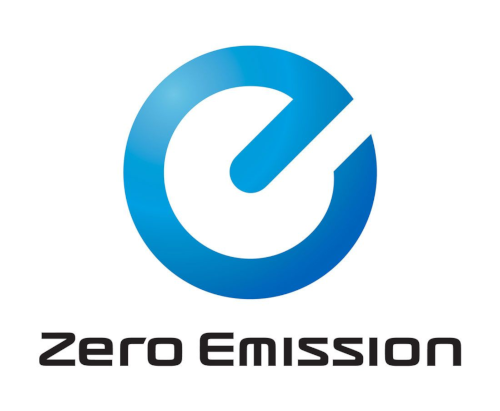I want to be able to swap out parts, or repair the laptop when something breaks. For that it seems like Framework would be the best.
I’ve been trying to convince my partner that we need to buy one. My only problem is that I have a perfectly good desktop, and don’t need a laptop.
- 6 Posts
- 19 Comments
There was a movie made about it.

 6·1 year ago
6·1 year agoI have been using my bike for most short trips.
I’ve even ridden my bike into the city, then taken a train most of the way home when I realised I’m not as fit as I thought I was.I’ve actually solved most of my travel issues by staying home and deciding that I don’t actually need to travel. This works less well when the purpose of travel is to get food.

 33·1 year ago
33·1 year agoThe numbers I’ve used are only for the refining of the fuel. This video by Mark Linthicum (hosted on the Fully Charged channel) gives an amazing amount of information on the topic.

 83·1 year ago
83·1 year agoEV’s are so much more efficient that even running from electricity produced by coal, they are significantly better than ICE (internal combustion engine) cars. Just the electricity used to refine enough fuel to drive 100mi would be enough to drive an average EV more than 60mi. (This detail gets conveniently left out when comparing ICE cars to EVs).
We still need to decarbonise the grid, and as that happens, all electric cars (regardless of age) will become less polluting too. Having an unclean grid is not an excuse to keep using ICE vehicles.

 262·1 year ago
262·1 year agoI have an electric car because I refuse to pay any more money to fossil fuel companies but still need to drive. I use public transport where possible, but many trips just aren’t viable.
It takes me 30 minutes to walk to the nearest shopping centre, but 2 hours to get there by public transport, or 5 minutes by car.
As an average citizen, I don’t have the means to build or fund new railway lines. I am, however, lucky enough to be able to refuse to drive fossil fueled vehicles and still survive.

 11·1 year ago
11·1 year agoPower prices fluctuate. If more power is needed than is supplied, prices will go up until either someone reduces their demand, or someone generates more power.
Some companies are deliberately waiting for extra high prices before they start delivering more power, and now they are doing the same with batteries.
They could be supplying the power much earlier and cheaper with batteries (unlike peaker plants that cost a lot to operate), but they just decided not to.
Batteries are not the problem, it’s the companies who are using them for profit instead of for grid stability.

 2·1 year ago
2·1 year agoWhat is a New Energy Vehicle, and how is it different from a Battery Electric Vehicle?
Salmon swim upstream because downstream is too mainstream.
. 0 Rankine: you’re dead. . 100 Rankine: you’re dead.
I keep trying different distros, but I keep coming back to Mint. It’s just the right mix of user friendly and customisable for me.
This comment is written from Australia. Most information should be the same for Europe, but possibly not all.
You have 2 main types of charger: DC fast, and AC destination.
AC (destination) chargers are technically not chargers, just Electric Vehicle Supply Equipment (EVSE). They provide AC power from the grid (and a signal telling the car how much power is available), and the car’s onboard charger does the AC to DC conversion to charge the battery. Your car’s onboard charger is probably limited to 3.6kW (15A at 230V). You can still plug in to faster chargers (EVSEs), but your car will only take 3.6kW max.
The DC chargers are actual chargers (although the charging unit is often 2-5 meters away from the cable holder). These bypass the car’s onboard charger and directly connect to the battery. This allows for much faster charging, but the communication protocols have to be more complex to allow the charger to interface correctly with the battery.
Your DC fast charge port is CHAdeMO. The 2 part charger cables you have seen are likely CCS. Unfortunately, you can’t get an adaptor for your car for many complicated reasons involving communication timings, voltage requirements, and connector locking. All DC chargers come with attached cables.
Your car can probably take about 50kW from a fast charger. This will gradually reduce as the battery charges, and it’s usually not worth charging past 80% on a rapid charger due to the limited charging speed. The Leaf also has an issue with battery overheating when fast charging. This will cause the charge rate to be dramatically reduced to protect the battery health. You’ll really only see this if rapid charging multiple times in one day.Your AC charging port is type 1 (J1772). The other main option is type 2 (Mennekes). Because the onboard charger is doing all the work, you can get an adaptor between the two.
It’s important to note here that the type 2 cable has 4 possible connectors (2 male, 2 female). The difference is the length of the connector, and is designed to prevent people stringing multiple type 2 to type 2 cables together. The downside is that a type 2 to type 1 cable (used to plug your car into a “byo cable” charger) will not connect to a charger with attached type 2 cable. Likewise, an adaptor that can connect to a type 2 cable will not plug in to a “byo cable” charger. If you want full compatibility with all chargers you’ll need to have a type 2 to type 1 cable, and a type 2 to type 1 adaptor.It is not possible to get an adaptor between AC and DC connectors. You would need a charger or inverter, and those are very bulky and cost over £5,000. Not what you want in the middle of a cable.
You may find that you don’t need to charge away from home as much as you originally thought. I’ve had a type 2 to type 1 charger for several years and only used it once (although it was quite convenient then).
EDIT: Feel free to join https://lemmy.ml/c/nissan_leaf for any Leaf-specific questions.
My wife discovered that reading was her special interest after I pointed out that reading 600 books in a year wasn’t normal.

 8·1 year ago
8·1 year agoStackOverflow had the same feature until people started abusing it for SEO. After that, they decided to remove that option.
I just lost my OS again (probably corrupted drive) and was planning to distro hop. Unfortunately, I suspect you’re right.












I didn’t know that. Perhaps I need to research a little more before commenting.
Thanks!